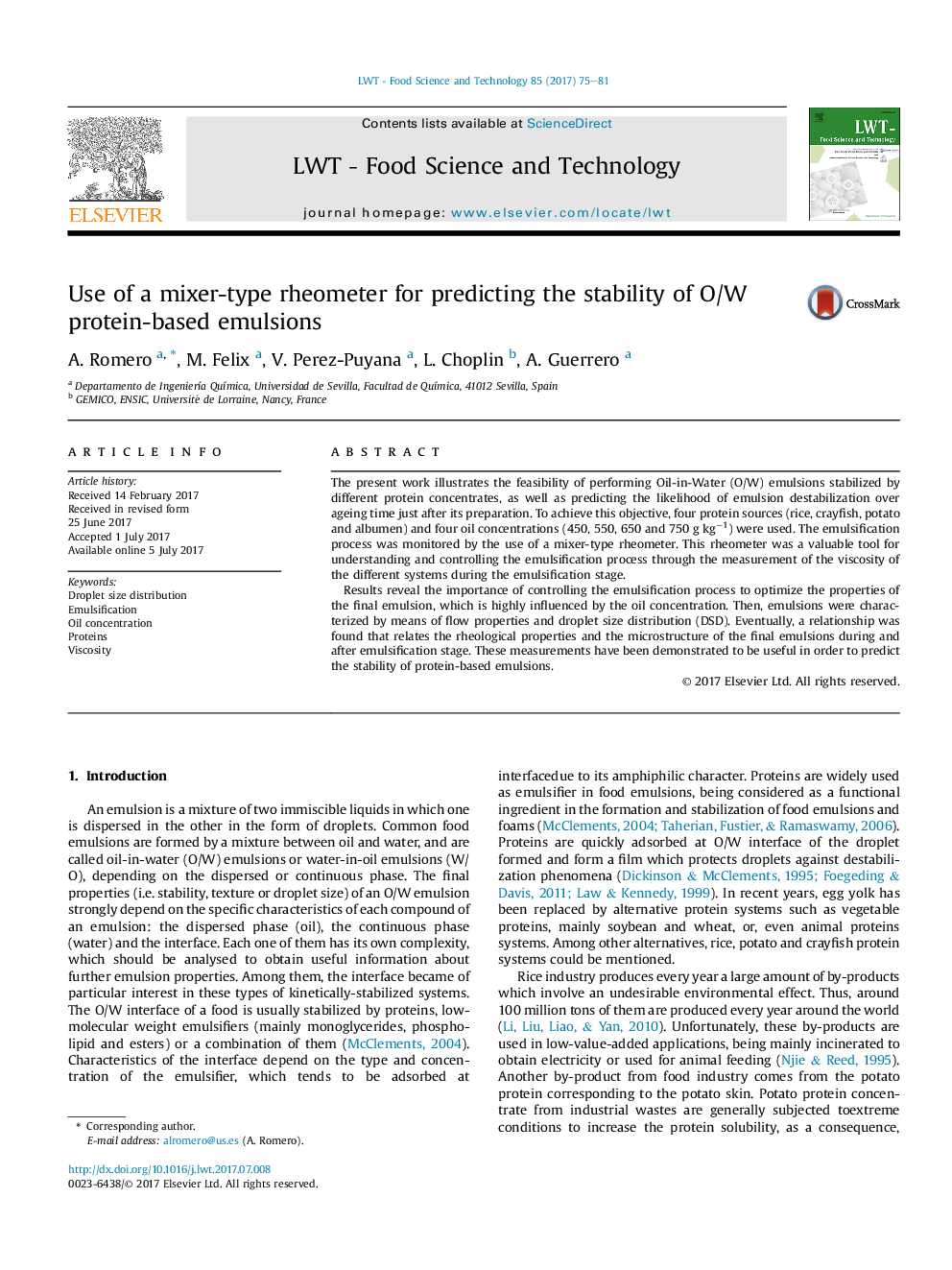| Article ID | Journal | Published Year | Pages | File Type |
|---|---|---|---|---|
| 5768434 | LWT - Food Science and Technology | 2017 | 7 Pages |
â¢Oil-in-Water emulsions were stabilized by four different protein concentrates.â¢Oil content influenced emulsion viscosity depending on the nature of the protein used.â¢Rice-based emulsions showed the lowest viscosity regardless of oil concentration.â¢Higher oil concentration produced an increase in the viscosity of emulsions.â¢Albumen-based and potato-based emulsions showed the highest and lowest Droplet Size.
The present work illustrates the feasibility of performing Oil-in-Water (O/W) emulsions stabilized by different protein concentrates, as well as predicting the likelihood of emulsion destabilization over ageing time just after its preparation. To achieve this objective, four protein sources (rice, crayfish, potato and albumen) and four oil concentrations (450, 550, 650 and 750 g kgâ1) were used. The emulsification process was monitored by the use of a mixer-type rheometer. This rheometer was a valuable tool for understanding and controlling the emulsification process through the measurement of the viscosity of the different systems during the emulsification stage.Results reveal the importance of controlling the emulsification process to optimize the properties of the final emulsion, which is highly influenced by the oil concentration. Then, emulsions were characterized by means of flow properties and droplet size distribution (DSD). Eventually, a relationship was found that relates the rheological properties and the microstructure of the final emulsions during and after emulsification stage. These measurements have been demonstrated to be useful in order to predict the stability of protein-based emulsions.
